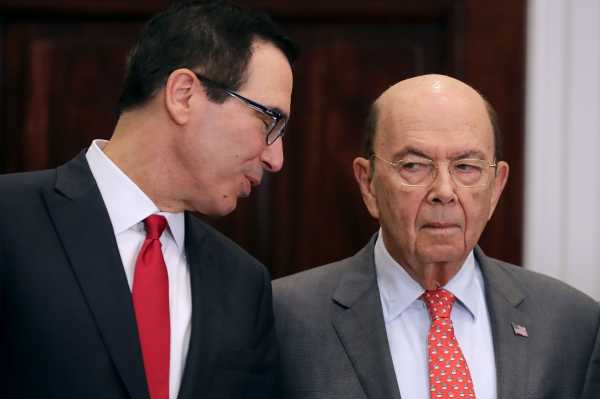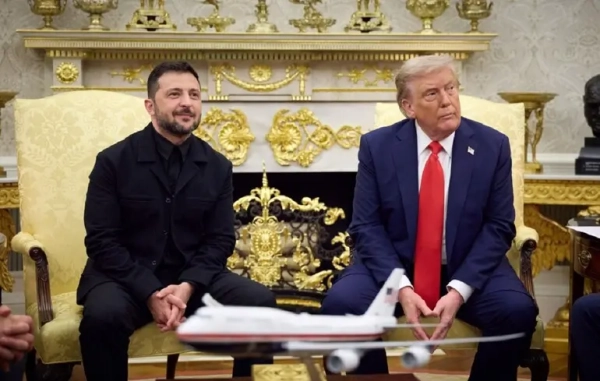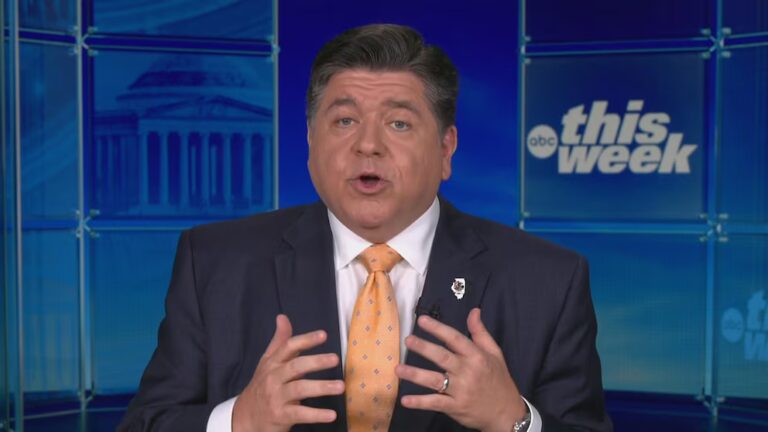
Steve Mnuchin can’t quite bring himself to publicly say President Donald Trump’s fake middle-class tax cuts aren’t real, but he’s almost there.
The treasury secretary in an interview with Bloomberg on Tuesday declined to comment on whether the 10 percent tax cut for the middle class the president suddenly started talking about before the 2018 midterms actually exists.
“I’m not going to comment on whether it is a real thing or not a real thing,” Mnuchin said.
He said that the administration is focused on “other things,” including working with Congress on “some minor technical corrections” to the tax cut bill the GOP passed in 2017.
The phantom tax cut never existed.
Trump first floated the idea in October, telling reporters in Nevada he was working on a “very major tax cut for middle-income people” and that the White House and congressional leaders were “studying very deeply, round the clock.” The president said the cuts would be announced by November 1.
No one seemed to know what he was talking about at the time, though Mnuchin tried to cover. He told the New York Times after Trump’s remarks that the GOP was developing another tax plan to release “shortly” that would be “focused on the middle class and not beyond that.”
Trump continued to talk about the tax cut, even saying during a rally for Sen. Ted Cruz (R-TX) in October that Congress would put out a plan the next week. But Congress was on recess at the time and wouldn’t be in session until after the midterms. (When a reporter pointed that out to Trump, he said Congress would “do the vote after the election.”)
The election came and went, and it’s now nearly the end of the year. There’s been no vote, much less any sort of plan.
Trump’s top economic adviser already said there’s no tax plan coming
While Mnuchin on Tuesday hedged on Trump’s made-up new tax cut, Larry Kudlow, director of the National Economic Council, has been more forthcoming about it not really being a thing.
In an interview with Politico’s Ben White published a week after the election, Kudlow acknowledged the idea was essentially dead:
The GOP had a tax plan to run on in the midterms: the one they passed in December 2017. But voters weren’t into it, so instead, they tried to make up new ones — some with more details than others.
In September, House Republicans rolled out “Tax Reform 2.0,” a set of new proposals to add on to the 2017 bill. Among other things, the proposals would make the individual tax cuts contained in last year’s legislation permanent — they’re currently scheduled to expire after 2025. Later in the month, the House quietly passed the bill that would extend the individual cuts when most of the media’s attention was on then-Supreme Court nominee Brett Kavanaugh. They sent it to the Senate, which appears to have no intention of taking it up. And now that Democrats will take the House, there’s no clear path forward.
The GOP had a chance to create a tax cut that did more for the middle class when it passed the Tax Cuts and Jobs Act in 2017. Instead, Republicans went with a tax bill that, while it does cut taxes for most Americans, overwhelmingly benefits the rich and corporations.
As Bloomberg notes, the House Rules Committee on Wednesday is scheduled to consider year-end tax legislation that would fix mistakes in the 2017 bill. Among the fixes on the table is one corporations, including Target and Best Buy, have lobbied for.
Sourse: vox.com






